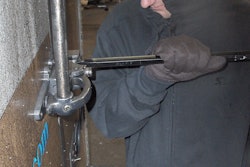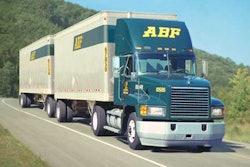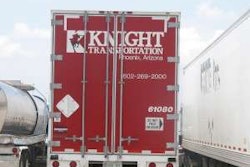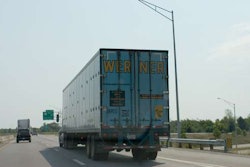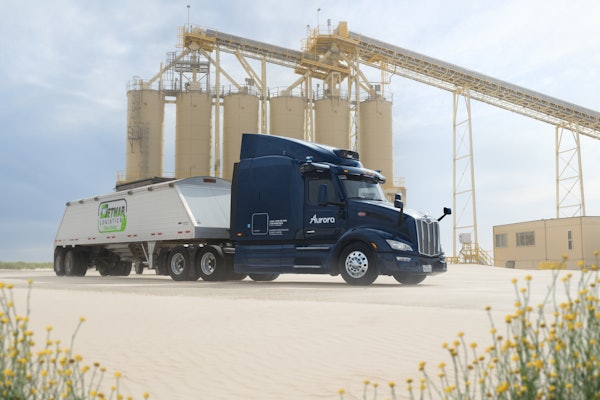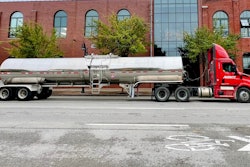Daimler Trucks North America and Volvo Trucks North America on Thursday, July 22, issued a sharp condemnation of a “fluid economy” road test commissioned by Navistar comparing the performance of trucks equipped with selective catalytic reduction and trucks equipped with exhaust gas reduction technology to reduce emissions of nitrous oxide.
Navistar is the only U.S. heavy-duty truck manufacturer to use an “EGR only” solution to meet stringent 2010 U.S. Environmental Protection Agency regulations limiting the amount of pollutants a diesel truck engine can emit into the atmosphere. All other North American engine manufacturers have elected to use SCR technology, which sprays hot diesel exhaust gas with a urea-based diesel exhaust fluid. The resulting chemical reaction removes virtually all NOx from the exhaust gas stream. In contrast, EGR systems continually recirculate exhaust gas into the engine’s combustion chamber, where NOx is burned up.
The new regulations, which came into effect this year, allow only .02 grams of NOx to be present in exhaust leaving a diesel engine. SCR systems meet this current standard, while Navistar’s EGR-only engines currently emit .05 grams of NOx into the atmosphere. Technically, this amount of NOx is in excess of the EPA standard, but Navistar has bankrolled a large number of EPA emissions “credits,” which reward the manufacturer for its early compliance and superior performance in meeting 2007 emissions regulations. Navistar repeatedly has declined to say when these emissions credits while expire, but they insist that their EGR-only engines will be able to meet the current standard when they do.
Earlier in the week, Navistar announced that it was challenging claims by its competitors that diesel trucks equipped with SCR were achieving notably improved fuel economy with a series of side-by-side tests carried out by the Transportation Research Center of East Liberty, Ohio. The center used “fluid economy” as its measuring stick – in essence, tracking the consumption of both DEF and diesel fuel as a means for determining diesel engine efficiency and performance. Click here for a full report on the Navistar test.
Responding to the Navistar test today, Freightliner issued the following statement: “The credibility or validity of the test published by Navistar cannot be judged without revelation of more details. We run stringent fuel economy tests at Daimler Trucks North America (DTNA), which are both accurate and substantiated. We test back-to-back componentry, which is comparable from both a truck and an engine perspective. Ratings, displacements, truck configuration and more are matched to achieve valid results. The combination chosen by our competitor does not comply with these basic premises for proper engineering work and thus doesn’t provide a trustworthy result.
“The 440-mile test run by our competitor is not appropriate for testing modern EPA 2010-compliant trucks. Running such a short distance test tampers with the outcome by calibrating regeneration intervals to occur immediately before and immediately after the test is completed. DTNA’s BlueTec Detroit Diesel engines regenerate after thousands of miles, not hundreds of miles. The longer the test, the more realistic the results and the closer they are to what a customer would experience in real-world operations. DTNA has built more than 3,000 EPA 2010-compliant Cascadias with DD15 engines, and more than 2,000 full production vehicles are currently running every day in customer fleets. Numerous customers running real-life tests had completely different results, and they have found Freightliner to be the best solution.
“In order to get a truly accurate and reliable comparison between vehicles, the use of comparable products with equivalent drivetrain components is a must. We’re eagerly anticipating acquiring an EPA 2010-certified series production 12.4L MaxxForce engine in order to run our own comparison study.
“In the end, customers have voted loud and clear for Daimler’s BlueTec solution. Daimler Trucks North America has logged more than 25,000 EPA 2010 SCR-equipped orders. We are unaware of any announcements made by Navistar on their sales track record in this category to date.
“It is neither appropriate nor credible to compare the 12.4L MaxxForce ‘mystery’ engine with proven technology available in the market. A statement by J.P. Morgan issued just yesterday in an investor guidance statement picked up on public websites effectively refutes Navistar inferences from the study. In it, J.P. Morgan clearly articulates ‘the apples-and-oranges flaw in the comparison and questions Navistar’s intent in commissioning the study.’ We agree with that statement.”
To further support its position, DTNA cited recent findings from a workshop co-hosted by EPA and the California Air Resources Board:
• Data collected by DTNA and reported to agencies for compliance certification of its Detroit Diesel engines with BlueTec emissions systems comes after completion of more than 30 million test miles, including several million customer freight-hauling miles in DTNA EPA2010 trucks;
• DTNA’s EPA2010 trucks have been built on the assembly line in full production mode since the beginning of 2010, and to date, Freightliner has built more than 3,000 EPA2010-compliant Cascadias with DD15 engines. More than 2,000 DTNA EPA2010-compliant trucks are running in customer fleets already, with customer orders for more than 25,000 EPA10 vehicles to date, including 16,565 Freightliner-brand trucks;
• DTNA’s BlueTec emissions systems operate as designed, meeting federal and state air quality standards that reduce particulate matter and nitrogen oxides to near-zero levels without the use of credits;
• DTNA testing and customer experiences also validate that DEF refilling inducements work to consistently and effectively keep each DTNA vehicle operating in compliance with 2010 emissions standards; and
• The company will not comment on technologies manufactured or actions taken by other companies.



